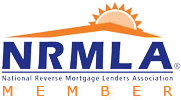For many senior homeowners, a reverse mortgage presents a unique and potentially life-enhancing opportunity to access the equity they’ve worked hard to build in their homes over the years. This financial tool can provide a source of funds to support retirement, cover unexpected expenses, or simply enhance financial flexibility. However, the process of applying for a reverse mortgage can feel overwhelming, particularly for those encountering this type of loan for the first time.
The journey involves understanding a range of requirements, terms, and steps that may seem daunting at first glance. That’s why this comprehensive guide has been designed—to break down the reverse mortgage application process into clear, manageable stages. Whether it’s gathering essential documents, working with a trusted lender, or navigating the financial implications, this guide will walk you through each detail at a high level.
By the end, we hope you’ll have the knowledge and confidence needed to approach the application process with ease and take the next steps toward leveraging the equity in your home.
Before applying, it’s important to confirm that you meet the basic eligibility requirements for a reverse mortgage. Most lenders require the following:
If you meet these requirements, you’re ready to start the application process.
A key part of the reverse mortgage application process is mandatory counseling. This ensures that you understand the terms of a reverse mortgage, its implications, and alternatives that may be available to you. Here’s what to expect:
Once you complete counseling, the agency will issue a counseling certificate required for the application.
Choosing a reputable reverse mortgage lender is crucial. Look for a lender with transparent terms, competitive rates, and experience offering reverse mortgages. As you research options, compare:
After selecting a lender, you can start the formal application.

Your lender will guide you through the application process, which involves providing necessary personal and financial information. Typical documentation includes:
Once all information is submitted, the lender will begin processing the application.

Next, the lender will arrange for a home appraisal to determine its market value. This appraisal impacts the amount you’ll be eligible to receive, as the loan amount is based on a percentage of your home’s value.
During underwriting, the lender verifies the information you provided and assesses your financial readiness for a reverse mortgage. The process includes:
Underwriting typically takes a few weeks, after which you’ll receive a decision on your application.
If approved, the final step is to close the loan. At closing, you’ll sign all necessary documents to finalize the reverse mortgage, including loan agreements and disclosures. Important things to note:
After signing, there is a three-day “right of rescission” period, allowing you to cancel the loan during this time if you change your mind.
Once the closing process is complete, you’ll start receiving funds based on your chosen disbursement option—whether that’s monthly installments, a line of credit, or a lump sum. These funds are yours to use however you wish, from covering daily expenses to making home improvements.
Your Takeaways
The reverse mortgage application process may feel daunting at first, but breaking it down into clear steps can help you approach it confidently. With a bit of preparation and the right lender, you’ll be well on your way to unlocking the value of your home. Home repairs, extra income for bills or medical, or even just an added cushion to help age in place. You’ll now be one step closer to reaching this reality.
Corporate Headquarters


HighTechLending Inc, doing business as American Senior Lending is an Equal Housing Lender, NMLS ID #7147 (www.nmlsconsumeraccess.org). 2030 Main Street, Suite #500, Irvine, CA 92614. AZ Mortgage Banker License # 0912577; Licensed by the Department of Financial Protection and Innovation under the California Residential Mortgage Lending Act, License #4130937; CO Mortgage Company Registration – Regulated by the Division of Real Estate; CT Mortgage Lender License #ML-7147; FL Mortgage Lender Servicer License #MLD1409; Georgia Residential Mortgage Licensee, License #53077; HI Mortgage Loan Originator Company License and Service License #HI-7147; ID Mortgage Broker/Lender License # MBL-2080007147; Illinois Residential Mortgage Licensee, License #MB.6761112 (for licensing information, go to: www.nmlsconsumeraccess.org), IL Residential Mortgage License # MB.6761112, Illinois Department of Financial and Professional Regulation, Division of Banking, 100 West Randolph, 9th Floor, Chicago, IL 60601, 1-888-473-4858; MD Mortgage Lender License #21762; ME Supervised Lender License #7147; MI Mortgage Broker/Lender/Servicer License #FR0026128 – 2nd TD Mortgage/Broker/Lender/Servicer License #SR0026129; NC Mortgage Lender License #L-165611; NH Mortgage Banker License #27178-MB; NJ Residential Mortgage Lender License, Licensed by the N.J. Department of Banking and Insurance; NM Mortgage Loan Company; NV Mortgage Company License #4517; OH Residential Mortgage Lending Act Certificate of Registration #RM.805365.000; OR Mortgage Lending License #ML-4386 and Servicer License #MS-139; PA Mortgage Lender #49892; Rhode Island License Lender, Rhode Island Licensed Loan Broker, RI Lender License #20244771LL – Loan Broker License #20244772LB; SC Mortgage Lender/Servicer License #MLS-7147; TN Mortgage License #7147; TX Mortgage Banker Registration; UT Residential First Mortgage Notification and Mortgage Entity License #8874117; Virginia Broker and Lender Licenses #MC-5962; WA Consumer Loan Company License #CL-7147.
Eric is a distinguished leader in the mortgage industry, with over 22 years of experience and 16 years focused on reverse mortgages for seniors. As Vice President of Consumer Direct at Reverse Mortgage Funding (RMF), he built and led a top-performing sales team of 90+ mortgage loan officers, securing RMF’s position as a top three lender and servicer monthly. Simultaneously, he co-led a retail team of 125+ outside originators, further expanding RMF’s market dominance.
Before RMF, Eric propelled Liberty Reverse Mortgage (formerly Genworth Financial) to the number one reverse mortgage retail lender in the nation by establishing a 100+ employee call center and managing 90+ nationwide loan originators.
Eric plays a pivotal role in marketing, enhancing referral partnerships, direct-to-consumer initiatives, and wholesale efforts through his leadership. His success is driven by data and performance tracking. Licensed in 11 states and a California Department of Real Estate Broker, Eric’s proven track record of leadership and innovation is poised to attract significant investment opportunities.